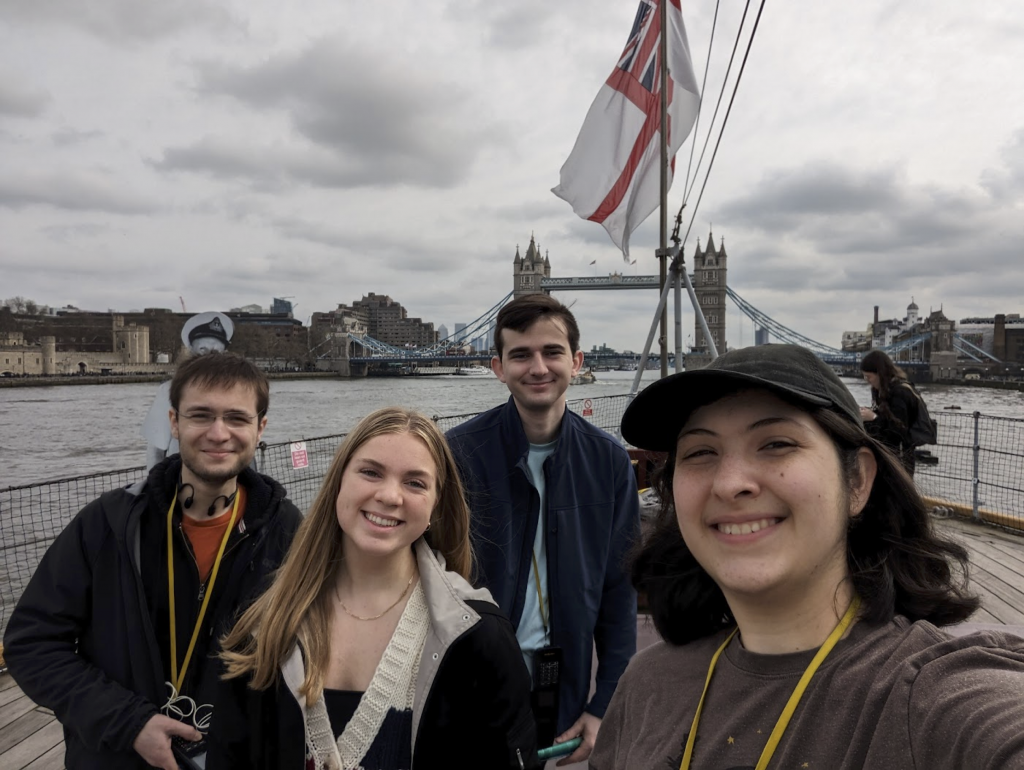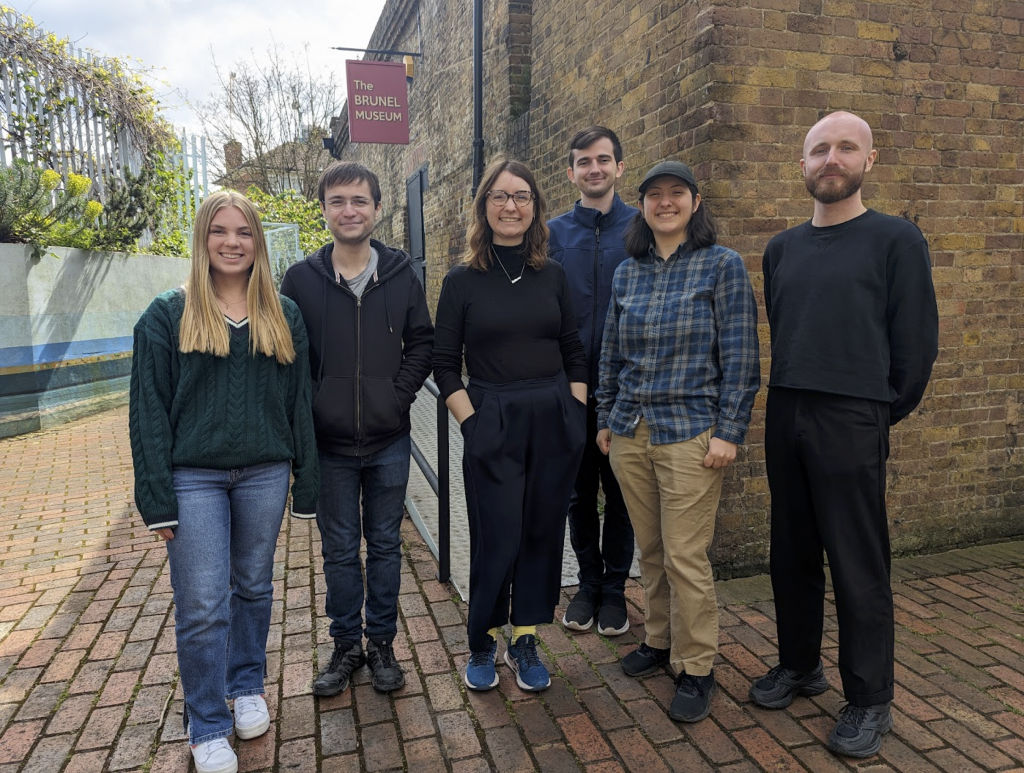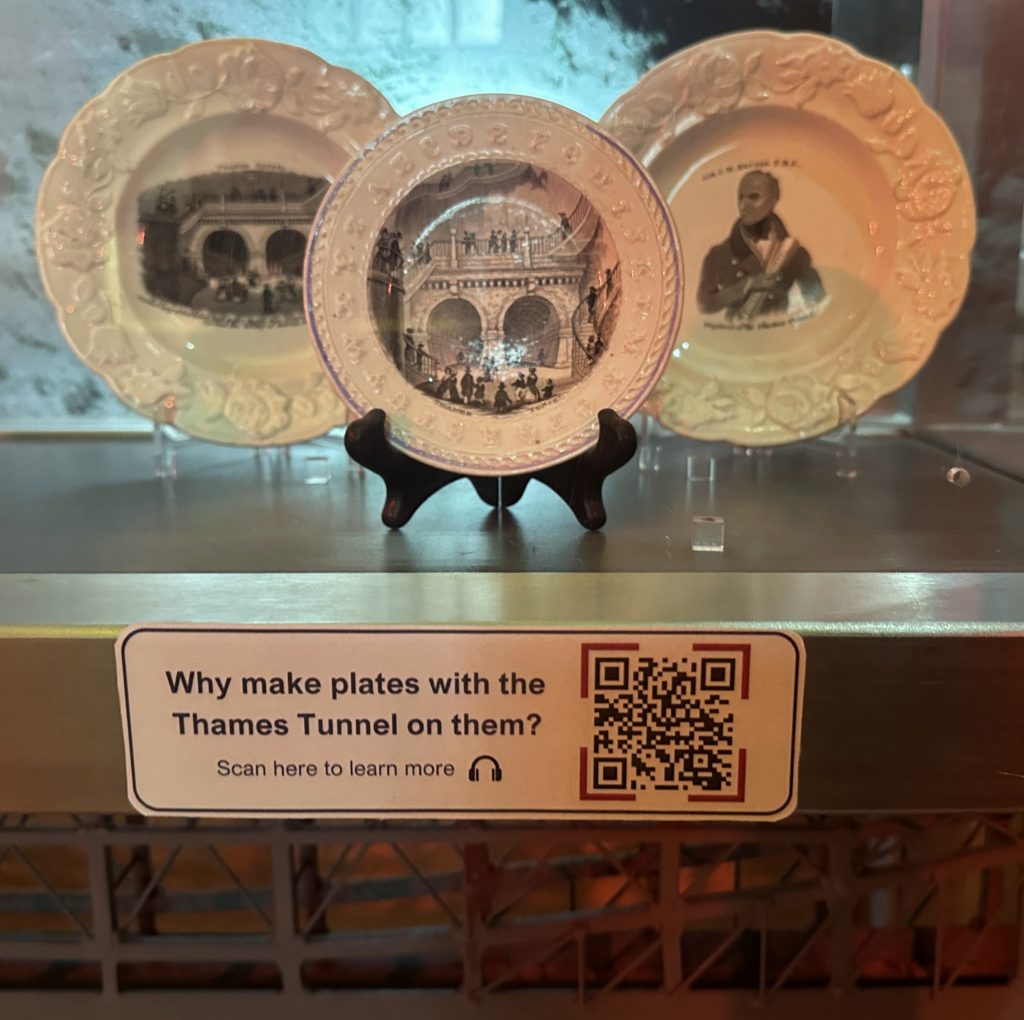Last week, the Museum launched a new audioguide which allows visitors to learn in-depth information about items on display – all for free. Next time you visit, why not try it out? All you’ll need to do is scan the QR code next to the objects to be taken to a dedicated webpage where you can hear about the objects.
The audioguide was developed for the Museum by four American students, who have written the blog below about the time they’ve spent in London working alongside the Museum staff and volunteers.
Hello! We are Benjamin Antupit, Natalie Carrington, Connor Quinn, and Sage Ugras, students from Worcester Polytechnic Institute in Massachusetts, USA currently studying Robotics Engineering, Mechanical and Materials Engineering, and Electrical and Computer Engineering. Over the last three and a half months we have branched out from our usual studies and have been researching, collecting data, and creating resources for the Brunel Museum. We have also had the pleasure to be at the museum in person for the last 7 weeks!
We started off our time here by visiting and taking audio guides at 10 museums in and around London. We then met with staff at the National Portrait Gallery, Imperial War Museums, and the Freud Museum London. Through these visits and interviews, we learned all about audio guide best practices and how museums in the area implement audio guides in different formats. These tours and interviews were a big highlight of our experience because we learned so much about how museums function behind the scenes. We got a real appreciation for all the work museum staff and volunteers put into keeping the museums up to date and running. One experience that was particularly memorable was getting to walk through the staff hallways between the National Portrait Gallery and their offices. Through doorways, we could see the labs that they used to conserve paintings and paint swatches on the walls as staff debated different color schemes for upcoming exhibits.

L-R: Benjamin, Natalie, Connor, and Sage visiting HMS Belfast
In addition to testing these audio guides, we spoke to representatives from Smartify and Guide ID, two companies that create programs and devices for the implementation of audio guides. We also spoke to a representative from Art UK who helped us better understand the Bloomberg Connects platform that we eventually recommended for the Brunel Museum.
In tandem with our museum visits, we also completed visitor tracking within the Engine House exhibit space. We learned about what artifacts and information visitors found engaging to inform the new exhibit layout after the completion of the Reinvented Project. While surveying visitors about their experience at the museum, we enjoyed having the opportunity to meet and learn more about community members and those who traveled from afar to see and learn more about the Thames Tunnel.
During our final three weeks at the museum, we created a prototype audio guide for the Engine House exhibit space. We had many conversations with Jack (Collections Access Coordinator) about the different artifacts in the museum and we learned the really interesting history behind the plates, buckles, and peepshows. We were really surprised by how the shoe buckles may tie back to Marc Brunel’s political views and history as well as the uncertainty of the backgrounds of both the buckles and the plates. It was exciting to know that there was still so much to learn about both of these artifacts!
We appreciated Jack, Katherine, Emily, and Helen’s readiness and excitement in helping us develop scripts and record audio guide stops. Our four-stop prototype audio guide will be available in the museum until October, and we hope that you come by and experience it for yourself!

L-R: Natalie, Benjamin, Katherine, Connor, Sage, and Jack at the Brunel Museum

